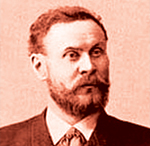INDIAN ARMED FORCES CHIEFS ON OUR RELENTLESS AND FOCUSED PUBLISHING EFFORTS

SP Guide Publications puts forth a well compiled articulation of issues, pursuits and accomplishments of the Indian Army, over the years

"Over the past 60 years, the growth of SP Guide Publications has mirrored the rising stature of Indian Navy. Its well-researched and informative magazines on Defence and Aerospace sector have served to shape an educated opinion of our military personnel, policy makers and the public alike. I wish SP's Publication team continued success, fair winds and following seas in all future endeavour!"

Since, its inception in 1964, SP Guide Publications has consistently demonstrated commitment to high-quality journalism in the aerospace and defence sectors, earning a well-deserved reputation as Asia's largest media house in this domain. I wish SP Guide Publications continued success in its pursuit of excellence.
Otto Lilienthal (1848 – 1896)

On August 9, 1896, Otto Lilienthal was flying one of his own gliders when a heat eddy blew him off balance. He attempted to recover but the glider stalled and crashed. Thrown from a height of 17 m, he broke his spine. Unputdownable, he reportedly said, Small sacrifices must be made! He died in hospital the next day aged 48.
Otto Lilienthal, one of the outstanding aviation pioneers of the 19th century, once said, To invent an airplane is nothing. To build one is something. But to fly is everything. He should know—he did all three.
Otto Lilienthal was born in Anklam, Prussia, on May 23, 1848. He and his brother Gustav were keenly interested in the phenomenon of flight. In elementary school, Otto’s formal education included bird studies, a happy circumstance which gave him a lifelong appreciation of the lessons birds had for humans attempting flight. Otto and Gustav spent hours observing birds in motion, trying to unlock their secrets of flying. Later, Otto studied mechanics at the Regional Technical School in Potsdam and became a professional design engineer. Not one to remain idle, he invented a variety of interesting devices and was awarded 20 patents. But his lifelong passion was flying.
Otto Lilienthal explored glider-based theories of flight and focused his attention on the shape of wings. His early experiments involved kites and other contraptions of his own design. In 1873, Otto and his brother went all the way to Great Britain to join the Aeronautical Society—so great was their interest in flying. Otto lectured at the Aeronautical Society and to other audiences on his observations and theories about bird flight and aviation. In 1889, he published a manual, Bird Flight as a Basis of Aviation, with detailed theories and calculations of the physics of flight, including his own illustrations of birds. This manual became Otto’s launch pad. His theories were now ready for practical application.
In 1890, Otto began to experiment with human passengers and the following year he built his first glider with the help of his brother Gustav. Otto’s main inspiration for his designs was, not surprisingly, birds and butterflies. He was keen to replicate the flight motion of the seagull, because of its extremely broad wing strokes and its ability to sail on the sea breeze. He was, however, most intrigued by the stork which, he said, seems to have been created for the purpose of serving as a model for human flight. He used willow rods, wire, cloth and wax in his constructions.
Otto’s No. 11 model became the most popular and the most often reproduced of his glider designs. It went into serial production in 1894. It had an evocative designation: normal soaring apparatus. A remarkable feature of his work was the painstaking and meticulous record he kept of all activities and experiments with manned flight, including numerous photographs. In fact, his pictures mark the beginning of the art of action photography. Photographs of Lilienthal in flight became famous worldwide.





